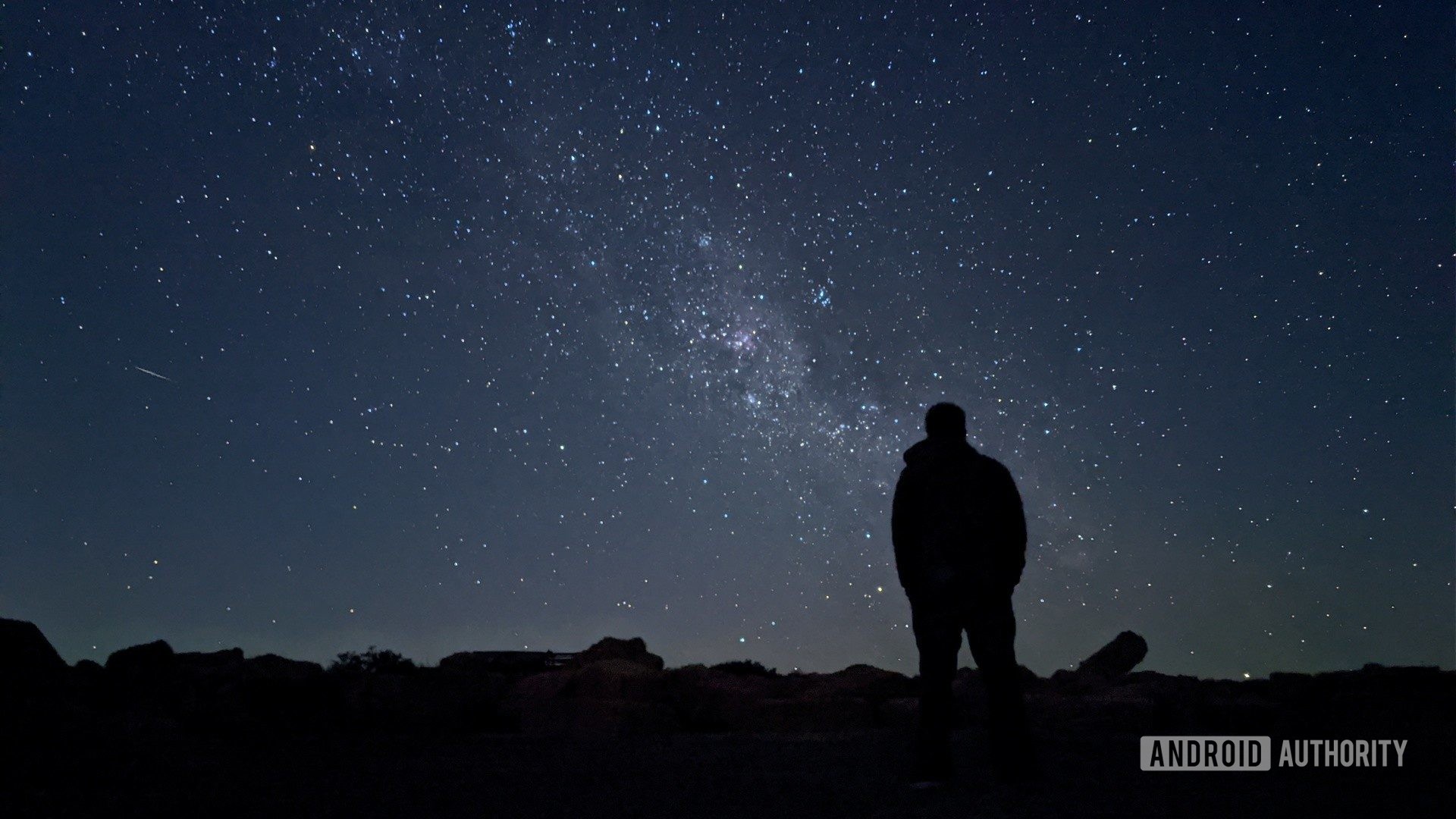Affiliate links on Android Authority may earn us a commission. Learn more.
It's niche, but I want my next phone to have an astrophotography mode

Photography drives smartphone technology in a variety of ways, with image signal processors, camera sensors, machine learning, and other components all being continuously improved in the name of better photos and videos.
Nowhere are these hardware and software advancements more keenly felt than in the low-light arena, with today’s night modes being essential on any phone if you want higher quality images when the sun goes down.
Smartphone makers have pushed things further, and we’ve seen more specific low-light modes like night portraits, night videos, light painting, and night panoramas. But there’s one low-light mode I’ve come to appreciate in the last few years and, as niche as it is, I don’t think I’ll be upgrading to a phone without it. Enter the astrophotography mode.
Astrophotography modes: Niche, yet astounding
Google debuted the astrophotography mode back in late 2019 with the Pixel 4 series, allowing you to take photos of the night sky. The mode works by combining and aligning multiple 15-second exposures over a period of up to four minutes to produce some astounding images. Check out some examples below, taken with the Pixel 4 and vivo X60 Pro Plus.
It almost goes without saying that this is a very niche and demanding camera mode in the first place. You need a tripod, skies with reduced light pollution, and a minute or four to capture each shot. Clearly, there are more requirements than your typical night mode. But today’s astrophotography modes still make for much less work than doing it the traditional way.
Prior to this mode, astrophotography shots required extensive editing and/or knowledge of manual camera settings. Today, the phone will automatically capture and align all the frames so you’re not left with streaky smudges where stars should be.
Astrophotography modes aren't something you're going to be using everyday, but you'll get photos that aren't easily achievable on your phone otherwise.
I’ve definitely found the astro mode images to be worth the effort of setting up a tripod and waiting a few minutes when I’m on holiday. These pictures remind me that we’re just a tiny blue marble floating through space, showing us stars, the Milky Way, nebulae, and even satellites arcing across the sky.
I like the idea of astronomy too, but haven’t bothered to actually learn about the various constellations and phenomena in my neighborhood, so to speak. So in addition to capturing beautiful, otherworldly images, an astro mode helps me learn about my night sky too.
How important is an astrophotography mode to you?
It’s worth noting that there are ways to get astrophotography modes on phones without the option, as unofficial ports of Google’s camera app often include this mode. These ports are no guarantee of a stable experience, though. So it’s a bit of a gamble to upgrade to a phone without the mode in the hopes that an unofficial port will do the trick. It pays to simply take the official route and get a phone with this mode in the first place.
Fortunately, there are several brands out there that include an astrophotography mode in their camera app. These brands include Google, realme, vivo, and Xiaomi. So I’ve got my fair share of devices to choose from now that I’m thinking about an upgrade. In saying so, I’d love to see Samsung offer an astro mode on its phones too. This way, I can have the S22 Ultra’s great camera setup and a niche yet cool camera feature in one device.